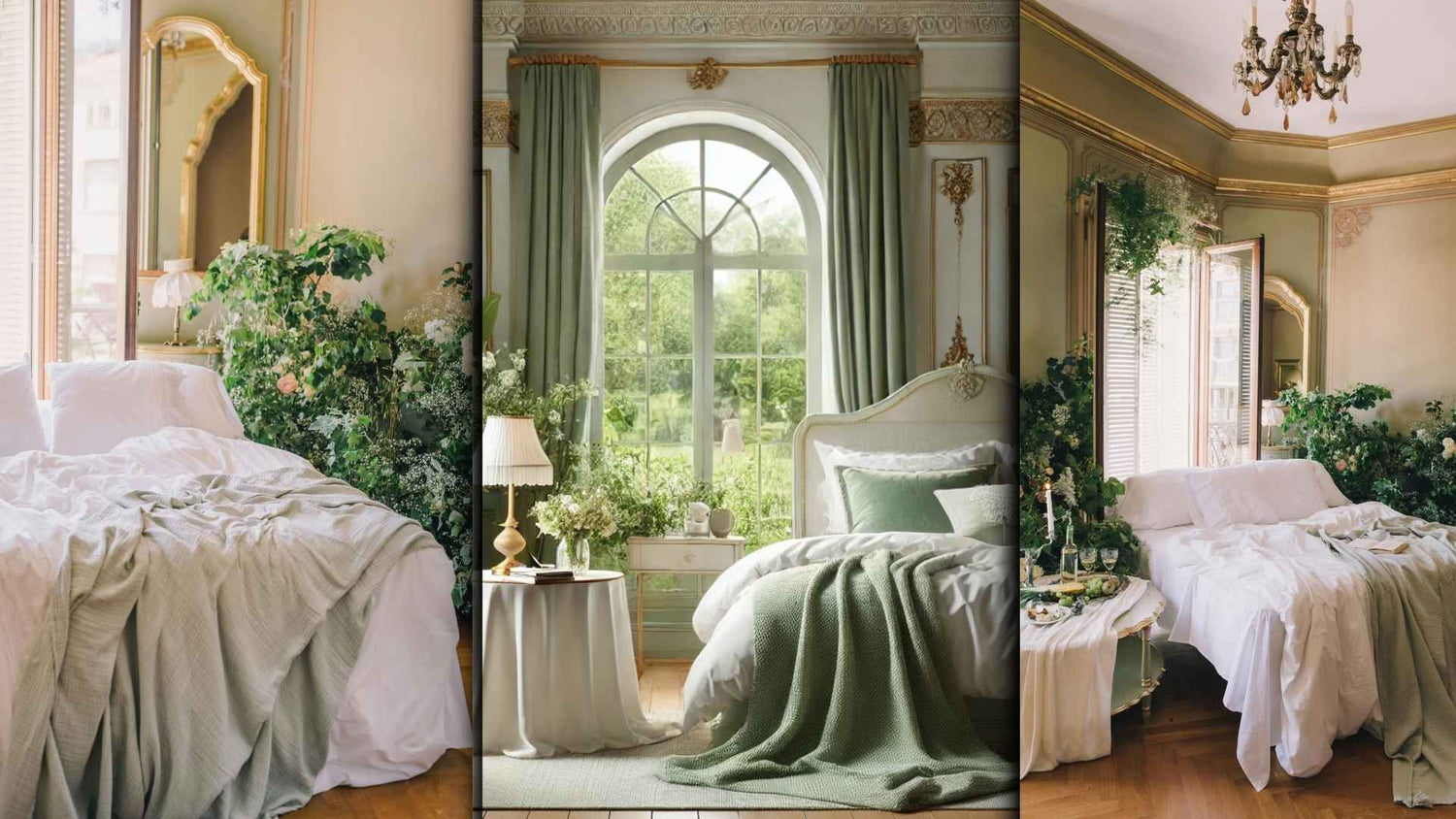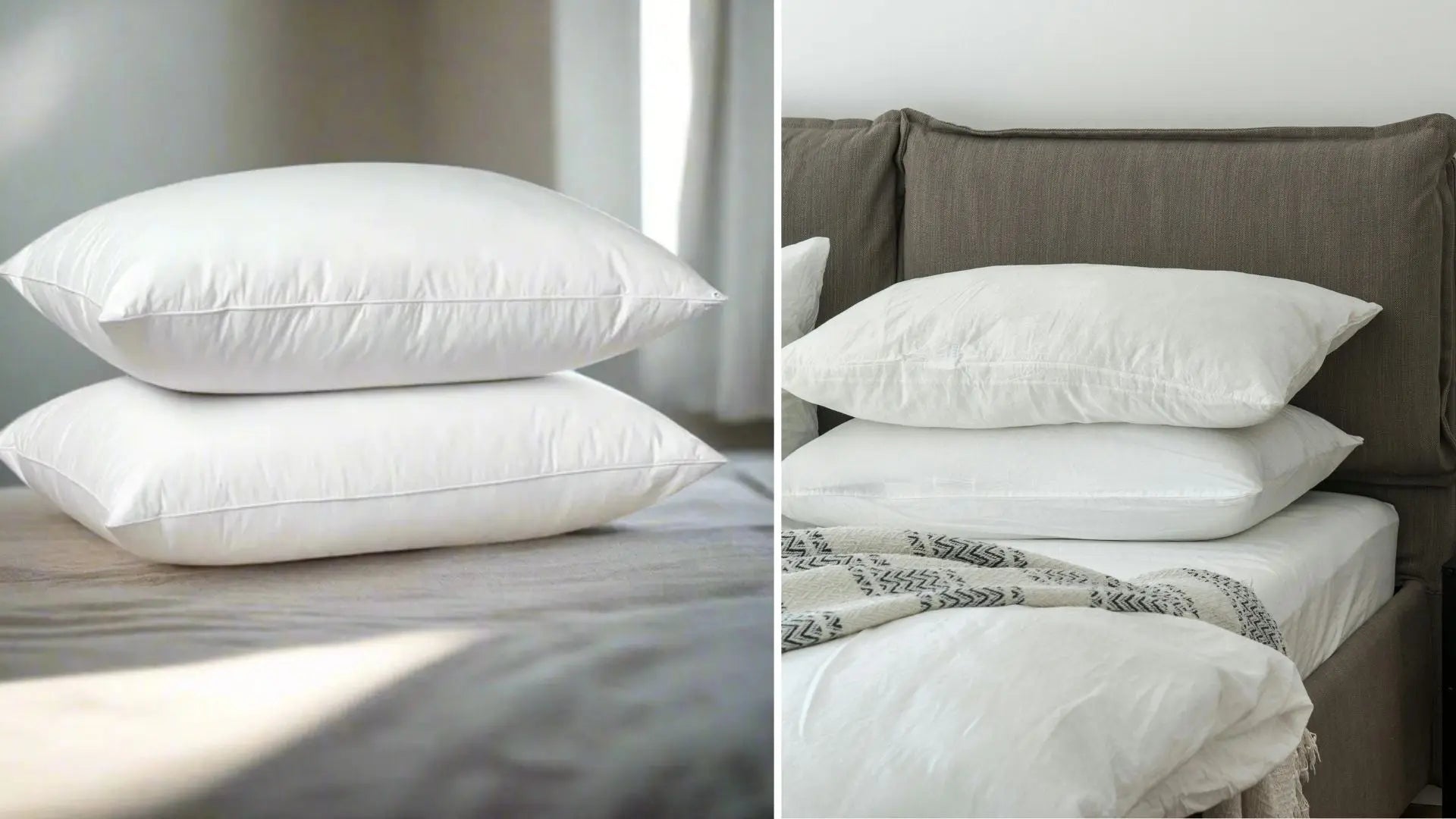Why Sustainable Bedding Matters
Sustainable bedding is more than just a buzzword, it’s a lifestyle choice. Imagine a bed that not only comforts you but also respects the environment. Sustainable bedding is all about using eco-friendly materials, reducing waste, and making smarter, greener choices for the planet.
By choosing sustainable bedding, you're contributing to a cleaner environment, supporting fair labor practices, and investing in better sleep quality. And who doesn't want that?
Sustainable bedding is made from natural, biodegradable, and renewable materials such as organic cotton, bamboo, and linen.
These materials are produced without harmful chemicals, pesticides, or synthetic fibers, ensuring that they’re both good for your health and the environment.
In this guide, we’ll dive deep into the world of sustainable bedding, exploring the materials, the benefits, and the best ways to choose and care for eco-friendly sheets. Plus, we’ll answer some common myths and provide you with tips to make your bedroom greener.
What is Sustainable Bedding?
Sustainable bedding is made from materials that prioritize the environment and your health. Unlike traditional bedding, which often uses synthetic fibers and toxic chemicals, sustainable bedding aims to reduce its carbon footprint and environmental impact.
Key Features of Sustainable Bedding:
- Use of Natural Materials: Organic cotton, bamboo, linen, and recycled fabrics are commonly used.
- Non-Toxic Production: Free from harmful pesticides, dyes, and synthetic chemicals that could affect health and the environment.
- Eco-Friendly Manufacturing: Produced in facilities that emphasize ethical labor practices, minimal water use, and reduced carbon emissions.
-
Biodegradability: Unlike polyester and synthetic materials, natural fibers break down over time without leaving behind harmful microplastics.
Read our article on why investing in quality bedding is important.
Why is it Important?
Traditional bedding materials, like polyester, take hundreds of years to decompose in landfills. Not only that, but the process of making synthetic fabrics involves harmful chemicals that contribute to environmental pollution.
Here’s a quick look at the difference:
|
Traditional Bedding |
Sustainable Bedding |
|
Made from synthetic materials (e.g., polyester). |
Made from organic cotton, bamboo, linen, or recycled fabrics. |
|
Uses harmful pesticides and chemicals. |
Free from toxic chemicals and pesticides. |
|
Takes hundreds of years to decompose. |
Biodegradable and eco-friendly. |
Benefits of Sustainable Bedding: A Healthier Sleep and Planet

Switching to sustainable organic bedding has a lot of benefits—not just for the environment, but for your health and comfort too. Here are the top reasons why making the switch is a good idea:
-
Better for the Environment: Sustainable bedding reduces waste, uses fewer resources, and lowers carbon emissions.
For example, organic cotton farming uses 91% less water than conventional cotton farming, according to the Water Footprint Network. -
Healthier for You: Bamboo sheets and organic cotton are naturally hypoallergenic, which is great for those with sensitive skin or allergies.
No toxic dyes or pesticides are used in the production process, reducing the risk of irritation or respiratory issues. -
Durability: Eco-friendly materials, like linen, are known for their durability. Linen can last for decades, making it a cost-effective choice in the long run.
As a result, you'll replace your bedding less often, contributing to less waste. -
Better Sleep: Bamboo and organic cotton are naturally breathable, helping to regulate body temperature and wick away moisture.
These materials create a more comfortable sleeping environment, leading to better rest.
Eco-Friendly Bedding Materials: What You Should Know
The material used in your bedding plays a significant role in both comfort and sustainability. Let’s take a closer look at the most popular eco-friendly materials:
Organic Cotton
Organic cotton is grown without synthetic pesticides or fertilizers, making it a safer and cleaner option for both you and the planet. GOTS-certified organic cotton ensures that the fabric is made in a socially and environmentally responsible way.
- Benefits: Breathable, soft, and free from harmful chemicals.
- Best For: People with sensitive skin or allergies.
Bamboo
Bamboo is one of the fastest-growing plants on earth, making it an incredibly sustainable option. Bamboo bedding is known for its moisture-wicking properties and natural breathability, which makes it ideal for hot climates or those who tend to overheat during sleep.
- Benefits: Hypoallergenic, moisture-wicking, breathable.
- Best For: Hot sleepers and those with sensitive skin.
Linen
Linen is made from the flax plant, which requires minimal water and pesticides to grow. It’s also one of the oldest fabrics in history and is biodegradable.
- Benefits: Extremely durable, breathable, and perfect for warmer climates.
- Best For: Those who live in hot areas or want low-maintenance bedding.
Recycled Fabrics
Some sustainable bedding is made from recycled materials like plastic bottles, old garments, or fabric scraps. This helps divert waste from landfills and reduces the need for virgin resources.
- Benefits: Eco-friendly, reduces waste.
- Best For: Eco-conscious shoppers looking for innovative, high-quality bedding.
How to Choose Eco-Friendly Bedding

Choosing the right eco-friendly bedding can feel overwhelming, but it doesn’t have to be. Here are some tips to help you make the best choice:
-
Look for Certifications
Choose products that are certified by reputable organizations like GOTS, OEKO-TEX® Standard 100, or Fair Trade. These certifications ensure that your bedding is made from organic materials and produced ethically. -
Consider Your Climate
If you live in a hot climate, bamboo or linen may be your best options for their cooling and moisture-wicking properties. For cooler climates, organic cotton and wool-filled comforters might be more appropriate. -
Personal Preferences
Think about what matters most to you: softness, warmth, or durability? For example, organic cotton sheets are known for their softness, while linen is highly durable but can be a bit rougher to the touch at first. -
Budget Considerations
Sustainable bedding can be a bit more expensive upfront, but because it’s made to last, it’s a smart long-term investment. Compare prices and read reviews to find a product that fits your budget.
Caring for Sustainable Bedding: Keep It Green and Clean
To ensure that your sustainable bedding lasts longer and continues to perform well, here are some simple care tips:
- Washing: Use cold water and eco-friendly detergents to preserve fabric integrity and minimize environmental impact.
- Drying: Air-drying is preferred to reduce energy consumption and prevent fabric shrinkage.
- Storage: Store bedding in a cool, dry place away from direct sunlight to maintain freshness and color vibrancy.
- Repair and Reuse: Consider repairing minor wear and tear or repurposing old bedding into household items to extend its lifecycle.
Organic Luxury Bedding: Indulgence Meets Sustainability

You don’t have to sacrifice luxury for sustainability. Organic luxury bedding combines eco-friendly materials like organic cotton or Egyptian cotton with high-quality craftsmanship. These materials feel just as soft and luxurious as traditional luxury fabrics, but they’re much kinder to the planet.
Here’s a quick look at the benefits of organic bedding:
|
Feature |
Traditional Bedding |
Organic Bedding |
|
Fabric Source |
Synthetic, chemically-treated fibers |
Organic, non-toxic materials |
|
Environmental Impact |
High carbon footprint, chemical pollution |
Low carbon footprint, biodegradable |
|
Comfort |
Soft but can irritate sensitive skin |
Luxuriously soft and hypoallergenic |
Green Sleep Solutions: Beyond Bedding
Sustainable living extends beyond just the sheets and pillowcases on your bed.
To create a truly eco-friendly sleep environment, consider incorporating other sustainable elements into your bedroom setup.
-
Eco-friendly Mattresses: Look for mattresses made from organic latex or wool, which are naturally breathable and hypoallergenic and free from harmful substances.
These materials not only provide superior support and comfort but also last longer than conventional foam mattresses. -
Natural Bed Frames: Choose bed frames made from reclaimed wood or bamboo for a stylish, eco-conscious bedroom.
These materials are not only renewable but also add a unique, natural aesthetic to your sleeping space. -
Sustainable Decor: Add organic cotton or hemp curtains, rugs, and cushions to complement your eco-friendly bedding.
These materials are not treated with harsh dyes or chemicals, making them healthier for both your home and the planet.
Addressing Myths About Sustainable Bedding
There are many misconceptions surrounding sustainable bedding, which can deter some people from making the switch.
Here are two common myths debunked:
- Myth: Sustainable bedding is too expensive.
-
Reality: While sustainable bedding may have a higher upfront cost, it is a long-term investment.
High-quality, eco-friendly fabrics tend to be more durable than synthetic alternatives, meaning they last longer and need to be replaced less frequently - Myth: Sustainable bedding isn’t as comfortable.
-
Reality: Many eco-friendly materials, such as organic cotton and bamboo, are just as soft, if not softer, than traditional bedding.
Bamboo, for example, has a silky texture and excellent moisture-wicking properties, making it ideal for hot sleepers.
Conclusion: Invest in a Greener, Healthier Sleep
Sustainable bedding is more than just a trend; it’s a choice that impacts your health, the environment, and your overall well-being. By opting for organic cotton, bamboo, or linen, you're ensuring that your sleep is as green as it is comfortable.
Start your journey towards a more sustainable and luxurious sleep today—because you deserve to sleep green and live clean.






Leave a comment
This site is protected by hCaptcha and the hCaptcha Privacy Policy and Terms of Service apply.